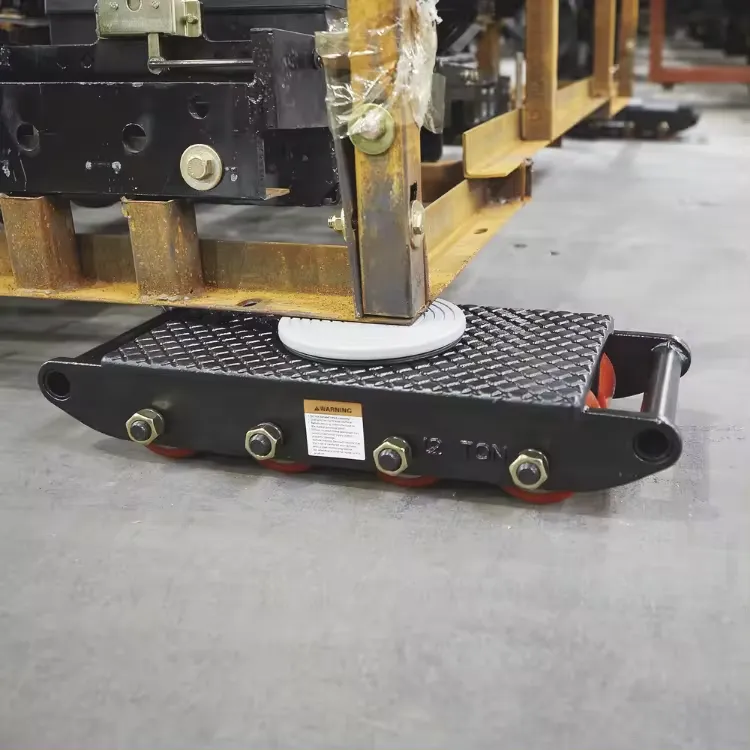I-beam Design Considerations for Efficient Gantry Crane Applications and Performance
I-Beam for Gantry Crane An Essential Component in Material Handling
Gantry cranes have become a crucial component in various industries, including manufacturing, construction, and shipping. They are designed to lift and move heavy loads across large distances, and their efficiency largely depends on the structure and materials used in their design. One of the most critical elements of a gantry crane is the I-beam, which provides the necessary strength and stability for lifting operations.
Understanding I-Beams
I-beams, also known as H-beams or universal beams, have a distinctive cross-sectional shape resembling the letter I. This design allows for maximum strength while minimizing weight, making them ideal for use in cranes. The vertical section of the beam is referred to as the web, while the horizontal sections are known as the flanges. This configuration provides excellent resistance to bending and shear forces, making I-beams strong yet lightweight.
The Role of I-Beams in Gantry Cranes
In a gantry crane, I-beams serve as the primary structure for the lifting mechanism. They are typically placed horizontally at the top of the crane, supporting the trolley that moves back and forth to lift loads. The design of the I-beam allows for a high load-bearing capacity, making it suitable for heavy lifting applications. The use of I-beams enables the gantry crane to efficiently transfer loads from the ground to elevated positions, significantly enhancing operational productivity.
Material Selection and Fabrication
The fabrication of I-beams for gantry cranes requires careful consideration of materials and quality. Generally, structural steel is the preferred material due to its high strength-to-weight ratio and durability. Different grades of steel may be utilized based on the specific requirements of the crane's application. For instance, higher-grade steel is recommended for cranes used in extreme conditions, such as in shipyards or heavy-lift operations.
In addition to material selection, the manufacturing processes employed in creating I-beams must adhere to strict quality standards. Common fabrication methods include welding and hot-rolled processes, which ensure that the beams can withstand the rigors of lifting operations. Regular inspections and testing are also crucial to ensure the structural integrity of the I-beams before they are installed in a gantry crane.
i beam for gantry crane

Advantages of Using I-Beams in Gantry Cranes
The use of I-beams in gantry cranes offers several advantages
1. Strength and Durability I-beams provide excellent strength characteristics, making them well-suited for heavy lifting and ensuring longevity in demanding environments.
2. Lightweight Design The structural efficiency of I-beams allows for a lighter crane design, which can reduce the overall cost of materials while maintaining performance.
3. Versatility I-beams can be customized in terms of dimensions and materials, allowing engineers to design gantry cranes that meet specific operational requirements.
4. Cost-Effectiveness Utilizing I-beams can lower production costs and maintenance expenses due to their robust nature and lower need for frequent repairs or replacements.
5. Ease of Assembly The design of I-beams makes them easy to handle and assemble, which simplifies the construction of the gantry crane and minimizes labor costs.
Conclusion
In conclusion, I-beams play a pivotal role in the design and functionality of gantry cranes. Their innovative design offers a robust solution for material handling operations, providing the necessary strength to lift heavy loads while remaining lightweight and cost-effective. As industries continue to evolve and demand more efficient lifting solutions, the importance of I-beams in gantry crane construction will only increase. Understanding the significance of these structural elements and their impact on crane performance is essential for engineers and operators looking to optimize their material handling processes. By leveraging the advantages of I-beams, businesses can enhance their operational efficiency, safety, and overall productivity in today's fast-paced industrial environment.
-
Unlock Seamless Relocation with Our Heavy Equipment Moving ExpertiseNewsJun.06,2025
-
Unleash Unrivaled Flexibility with Our Adjustable Gantry CraneNewsJun.06,2025
-
Unleash Heavy-Duty Efficiency with Our Industrial Gantry Crane SolutionsNewsJun.06,2025
-
Revolutionize Steel Handling with Our Magnetic Lifter RangeNewsJun.06,2025
-
Master Equipment Mobility with Premium Machinery Mover SolutionsNewsJun.06,2025
-
Elevate Your Material Handling with Magnetic Lifter TechnologyNewsJun.06,2025
-
YS Permanent Lifting Magnets: The Smarter Way to Handle SteelNewsMay.22,2025
